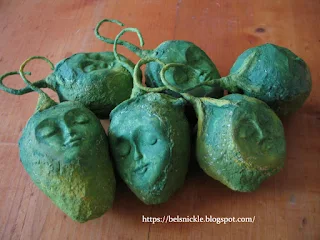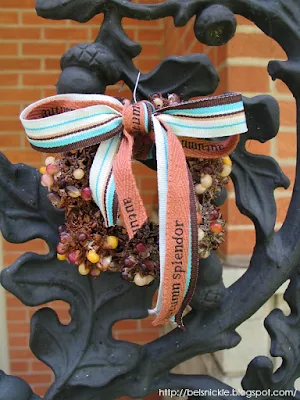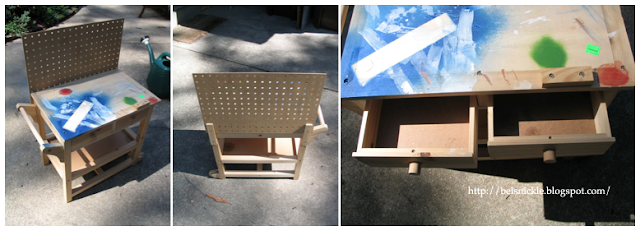One of my girls purchased these small beeswax ornaments from an estate sale very near our home. These decorations were in a large flat box along with some papers saying they were from Germany. Germans often trimmed their feather trees with beeswax poured into Springerle cookie molds and then painted these with whatever sort of paint they had at hand.
 |
| The wax here was dyed brown in order to imitate gingerbread. Then the ornaments were painted with trimmings made to imitate almonds, raisins, cloves and icing. |
 |
| The wax in these ornaments was dyed red and then the carved designs were highlighted with gold toned gilding paint. |
 |
| Red Star of Bethlehem was painted with gilding paints but most of it has worn away. Beeswax ornaments from Germany often are cast in the traditional red color of the Christmas holiday. |
 |
| An ivory colored wax ornament, green leafy cross and gold painted relief work. This decoration may have been crafted foran Easter egg tree. |
 |
| In the past, Germans crafted these very delicate, light weight figures from their Springerle molds for their feather trees. |
 |
| I love the tiny details of this molded, wax steam engine! |
 |
| This angel carries tulips and candles. Tulips in early Christian cultures were symbolic of The Holy Trinity. This is why you will find many old Christmas figures that carry them. |
 |
| A wax figure of an angel carries two burning candles and she has gilded features. |
 |
| Tiny wax soldiers dressed in old German uniforms; blue coats, gold buttons and trim, plus rifles, boots and gold trimmed hats finish off the details. |
 |
| A jolly St. Nicholas dressed in red and trimmed with gold highlights. |
 |
| A gilded wax basket holds brilliantly painted flowers in rose, blue and yellow. |
 |
| A wax pony with a red saddle and gold trimmed mane, hooves, and tail. |
 |
| A sweet little buro surrounded by flowers and a brilliant sun, may have been cast for an Easter egg tree. |
 |
| Small, authentic German feather tree candles. These are trimmed with green and red molded wax boarders. |
 |
| The Virgin Mary holds baby Jesus and she is dressed in a traditional blue headcovering and a white gown. Her baby wears nothing. |
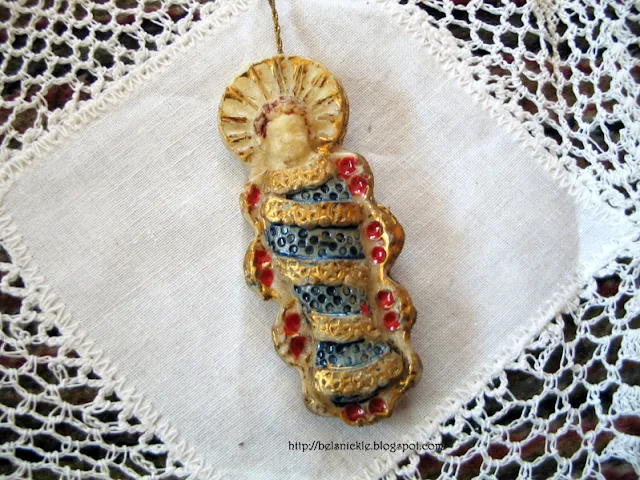 |
| Baby Jesus has a halo and is wrapped elaborately in a blue, red and gilded blanket. |
 |
| This tiny wax figure has a broken wing, but still plays her merry heart out! |
 |
| A tiny, red wax angel sports very little of the gilded paint she was once trimmed with. |
 |
| These three wax ornaments are probably modern. |
 |
| Wax gingerbread man and woman trimmed with almonds, raisins and colored icing. |
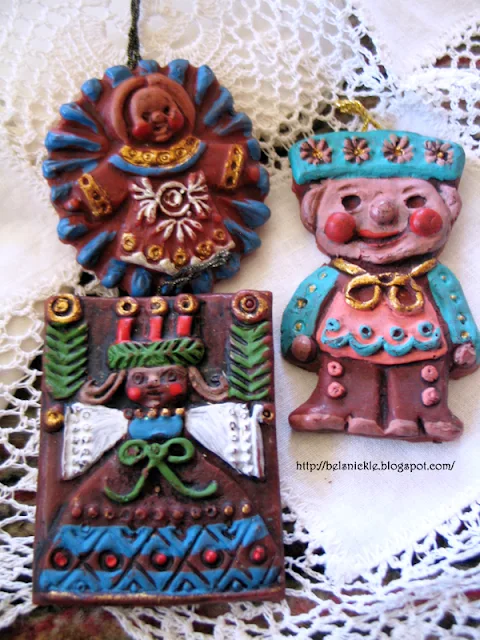 |
| My daughter says these versions are a bit spooky and cheerful at the same time? Wax figures such as these were painted to imitate gingerbread cookies. |
 |
| A red beeswax Christmas ornament holds a tulip. |
 |
| A wise man or king carries a flaming candle. |
 |
| Yet another wise man carries a Christmas candle with a halo surrounding it. |
 |
| The angles figures here were cast in white wax and then their gowns were painted bright blue. Their wings and dress details were then gilded. Their hangers are made from gilded twine as well. |
 |
| This tiny wax rabbit is painted very realistically compared to the other figures in this collection. It looks more contemporary to me. Perhaps it was made at a later date? |
 |
| A red beeswax angel plays a horn. She was cast and hand-painted in Germany. |
 |
| Two more gingerbread stars poured from wax and painted to look like the real thing. |





























